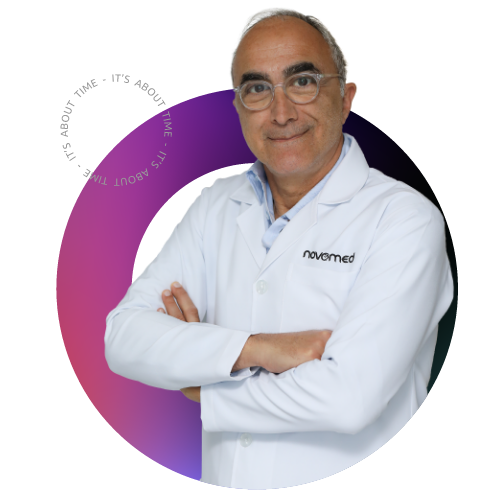What is gastroesophageal reflux disease?
Gastroesophageal reflux disease (GERD) occurs when stomach acid repeatedly returns to the esophagus (the tube connecting the mouth to the stomach) which can irritate the lining of your esophagus.
Many people develop acid reflux from time to time. Gastroesophageal reflux disease ranges from mild acid reflux that occurs once a week to a moderate or severe acid reflux that occurs very often or daily.
The symptoms or discomfort of GERD can be controlled by lifestyle changes, acid-blocking medications, or antacids. However, more severe cases of GERD may require stronger medications or surgery.
What are the symptoms of GERD?
• Heartburn after eating (this feeling may get worse at night).
• Chest pain
• Difficulty swallowing
• Reflux of food or an acid liquid
• Sore throat
• Difficulty sleeping when it happens at night
You should visit a doctor if the symptoms of GERD are acute or chronic or if you take over-the-counter medications for GERD more than twice a week.
What are the causes of GERD?
GERD is caused by frequent acid reflux. When you swallow food, a circular group of muscles surrounding the lower esophagus (lower esophageal sphincter) relaxes to allow food and fluid to flow into your stomach. Then the sphincter shuts off again. If the sphincter is abnormally soft or weak, stomach acid can return to the esophagus. This continuous backflow of acid irritates the lining of the esophagus, often causing it to become inflamed.
What are the risk factors of GERD?
• Obesity
• Pregnancy
• Hiatal hernia
• Connective tissue disorder
Moreover, the following factors may cause GERD to worsen:
• Eating large meals late at night
• Fatty or fried foods
• Alcohol and coffee
• Smoking
• Medications, such as aspirin
How is GERD diagnosed?
Your doctor may be able to diagnose GERD by performing a physical examination and reviewing your history of signs and symptoms.
To confirm a diagnosis of GERD or to check for complications, your doctor may recommend:
Upper endoscopy
Your doctor inserts a thin, flexible tube with a light and camera at its tip (endoscope) down your throat to examine the inside of your esophagus and stomach. Test results can often be normal with reflux, but an endoscopy may reveal esophagitis or other complications. Endoscopy may also be used to collect a sample of tissue (biopsy) to be tested for complications, such as Barrett’s esophagus.
Portable acidity probe test
A monitor is placed in your esophagus to find out when and for how long your acid reflux occurs. The monitor may be in the form of a thin, flexible tube that is passed through your nose into the esophagus, or in the form of a clip that is placed in the esophagus during endoscopy and out with stool after about two days.
Esophageal Manometry
This test measures the regular muscle contractions in the esophagus upon swallowing. Esophageal manometry also checks esophageal muscle coordination and force.
X-ray of the upper digestive system
X-rays are taken after you drink a contrast liquid that coats and fills the inner lining of your digestive system. This contrast fluid allows your doctor to see a silhouette of your esophagus, stomach, and upper intestine. Your doctor may also ask you to swallow a barium tablet, as they can help diagnose a narrowing of the esophagus that may interfere with swallowing.
How to treat GERD?
• Over the counter medications. These include:
- Antacids that neutralize stomach acid
- Medicines to reduce acid secretion
- Medicines that stimulate esophageal healing
• Prescribed medications. These include:
- H2 blockers
- Proton pump inhibitors
- Medicines that strengthen the lower esophageal sphincter
• Surgical treatments
Gastroesophageal reflux can usually be controlled with medications. But if they don’t reduce symptoms and you don’t want to always rely on them, your doctor may recommend the following procedures:
• Fundoplication. The surgeon wraps the upper part of your stomach around the lower esophageal sphincter to tighten its muscle and prevent reflux. Fundoplication is usually performed using a minimally invasive procedure (laparoscopy).
• LINX device. A ring made of tiny magnetic beads is wrapped around the junction between the stomach and the esophagus. The magnetic attraction between the beads is strong enough to block the esophageal opening and prevent the acid from going up, but it is still weak enough to allow food to pass through. LINX device can be implanted through a minimally invasive procedure.


























